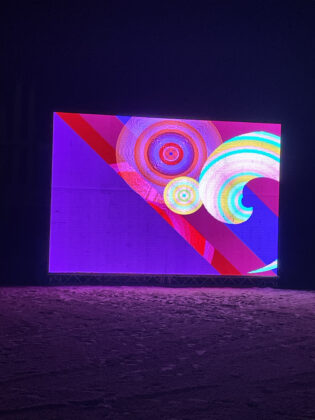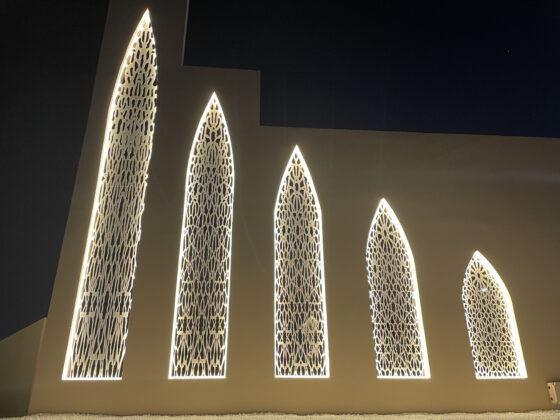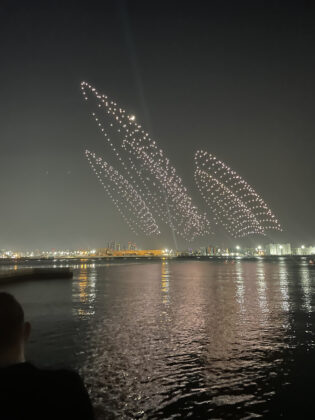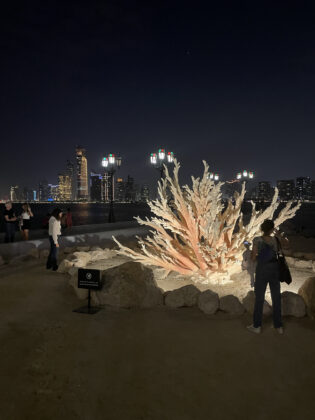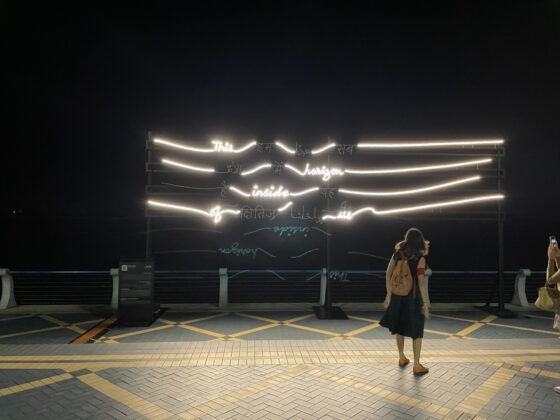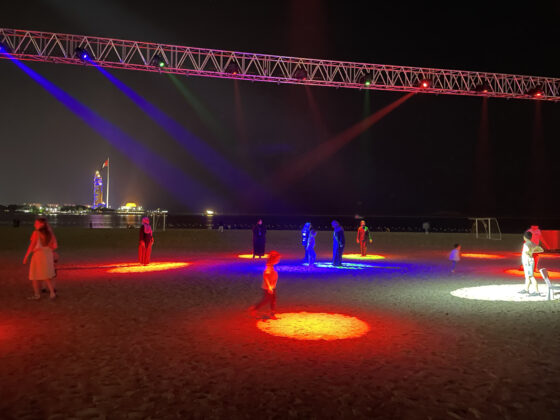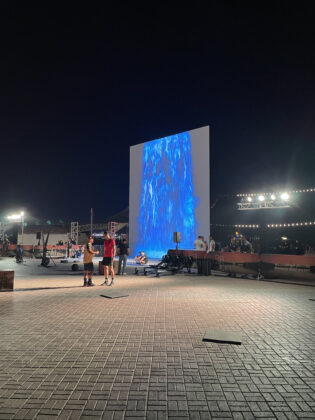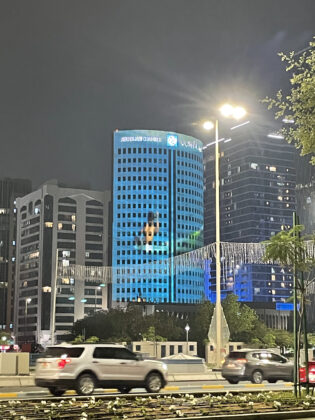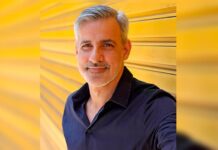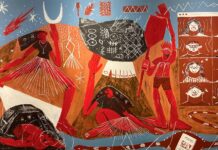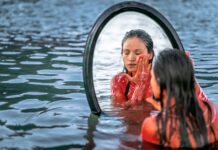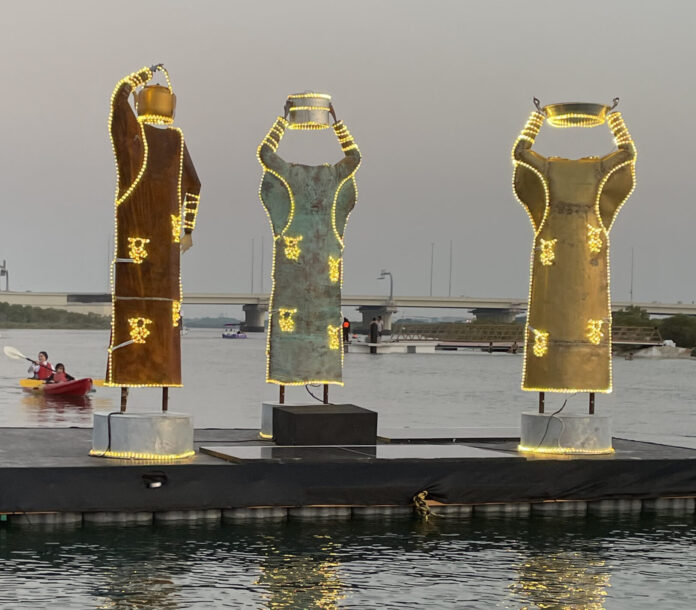
Ssuperlative is a condition that seems to be routine in the UAE, but the art show with light Manar Abu Dhabi, opened at the end of last November, reached a truly beyond level in terms of exaggeration.
Composed of around 20 artists, one of its most impactful initiatives is the use of a small, previously uninhabited island, Lulu Island. It was occupied by the Mexican-Canadian artist Rafael Lozano Hemmer, in a two-kilometer circuit that makes up ten large-scale works. The most impressive of them is Collider, made up of hundreds of robotic light beam spotlights that can be seen from a radius of no less than five kilometers.
“There was nothing here, we installed everything”, says Palestinian Reem Fada, curator of the exhibition, together with Alia Zaal Lootah, who is from the United Arab Emirates, during the exhibition's opening dinner, for around 500 guests, maintaining the superlative tradition .
Reem is responsible for the Public Art section of the Abu Dhabi Department of Culture and Tourism (DCT), which has a budget of US$35 million (about R$175 million) and, next year, she organizes the first Abu Dhabi Biennial, together with the Israeli Galit Eilat, one of those responsible for the 31st São Paulo Biennial, in 2014. A few kilometers away, another emirate, in this case Sharjah, already organizes a biennial, which in 2023 had its 15th edition .
What is impressive about Lulu Island is the perfection of its occupation: as the exhibition takes place at night, since the vast majority of the works are made up of light, there is an extremely organized circuit, with sophisticated lamps, bathrooms with air conditioning and rest areas.
Lozano-Hemmer's ten works are all large-scale. This is the case of the four thousand light bulbs Pulse Island, scattered among bushes and trees, creating a topology based on the pulse that is captured from each visitor by a machine. As a result, the lamps vibrate based on the heartbeat of each person who passes by the work. “Our concern is also with sustainability and these four thousand lamps use the same energy as just one vacuum cleaner”, says Reem.
Interaction mediated by technology is one of the Mexican artist's main investigations and a condition of all works on Lulu Island. In case of Collider, this interaction does not take place with humans, but through Geiger counters equipped to detect protons and alpha particles that constantly arrive at Earth, such as cosmic rays created by stars and black holes. With this, the light curtain reacts to collisions by creating cascading patterns of wave movement that are never repeated and that make the invisible connection with outer space tangible. It is one of those truly impressive and unforgettable works.
Performance in the sky
Hyperbólica is also the work of the French company Groupe F, specialized in participating in the opening of the Olympics, including Rio in 2016, and similar major events. In Abu Dhabi she presents Shape Persistence, a 20-minute performance, in which hundreds of drones draw in the sky in 3D six of the iconic cultural facilities already completed or under construction in the city's cultural district. Among them are the Louvre museum, the Guggenheim and the House of the Abrahamic Family, the only complex outside Jerusalem that houses a Catholic church, a synagogue and a mosque in the same area, opened a few months ago.
The visual spectacle takes place above the rounded dome of the Louvre, designed by French architect Jean Nouvel, and can be seen from different points of the city, given its size, with a reflection in the sea. Between each of the visualized cultural spaces, the drones create abstract images. According to Christophe Berthoneau, CEO and creative director of Groupe F, in a debate held shortly before the inauguration of the work, “the use of drones instead of fireworks has been more recurrent due to the lower environmental impact”.
Despite the cutting-edge technology, he states that technical problems similar to those with fireworks occur with drones: “In fact, it is a performance because we are never guaranteed that everything goes as planned, there are cases where the drone never returns.”
Archipelago
Abu Dhabi is an archipelago and, because of this, many of the works are arranged on islands. The only one who needs a boat to visit, in fact, is Lulu – her name, in fact, is one of the ways of saying pearl, which was one of the activities in the region, long before the discovery of oil, when families Those who took care of this economy became billionaires.
“This is an exhibition made in Abu Dhabi for Abu Dhabi, so we use its own geography, with the islands and mangroves as an exhibition space”, explained Reem at the opening of the event. The mangroves, in fact, are one of the most unusual places in the exhibition. They are occupied by three works created by three artists together: Shaikha al Ketbi, Radwha al Ketbi and Ayesha Hadhir, all born in the United Arab Emirates.
They are sculptures that float and have lamps that are located around their edges, like three female figures that carry instruments on their heads, which could represent women who washed clothes in the mangroves.
“When talking to the artists, it was they themselves who chose this location, because they live here, they know it well and decided to use the mangroves for their works”, explains Alia, curator of the exhibition. To access these works you need to go to a pier and from there take a 20-minute boat ride. As the works can only actually be seen after sunset, the best time is right after sunset, when the view of the mangroves is breathtaking.
Corniche
But not all works are installed in places with complex access. At least half of the facilities are along the Corniche, a promenade facing the Persian Gulf. There you will find, for example, Water, by Argentine Luciana Abait, an immense electronic panel that projects a kind of waterfall, a natural phenomenon that does not exist in the Emirates _not even perennial rivers exist in the desert country.
“They hijacked my work”, commented Reem ironically, upon realizing that in front of Luciana's work an ephemeral area had been set up to promote sports, as if the installation were part of the marketing action. This is the type of appropriation that ends up happening when it comes to work in public spaces.
In total, Corniche houses nine works, including video projections by Palestinian-American Samia Halaby and an interactive work by Carsten Höller, a German born in Belgium.
Born in Jerusalem and based in the United States, Samia studied paintings as early as the 1950s and the two works on display are kinetic and abstract paintings, created in 1992, one of the first works in visual arts to be created using computers. What was originally made for a small screen gained much larger dimensions for Manar, in two LED screens.
Carsten already participates with Abu Dhabi Dots, a kind of interactive game on the sand, where lights of different colors are projected and participants can walk with these colors and, when meeting other people, they can “steal” the color that is illuminating them, a proposition with which mainly children have fun.
It is there from the Corniche that you can still see Memories of a Porto, by UAE artist Ahmad Saeed Al Areef Al Dhaheri, with projections of archival images on the Chamber of Commerce headquarters building, one of the first modern buildings in the UAE. It is a mix of scenes, some that portray modest life before the explosion of wealth in the region with oil.
The United Arab Emirates was created in 1971, therefore one of the youngest countries on the globe, from the union of seven monarchies. Its population of around 10 million inhabitants has no less than 80% of it made up of foreigners. The power of money is visible all the time – everything seems newly built in the country, and it is no coincidence that it is one of the new members of the Brics economic bloc.
The relevance of art and culture in this scenario ends up being a differentiator, as in “hyperlative” dimensions. But the female presence in command is also an element worth noting – in the government, 50% of ministers are women. “I suffered much more from the patriarchal culture in the United States than here”, says Reem, who is also linked to the Guggenheim Abu Dhabi, scheduled to open in 2025.



